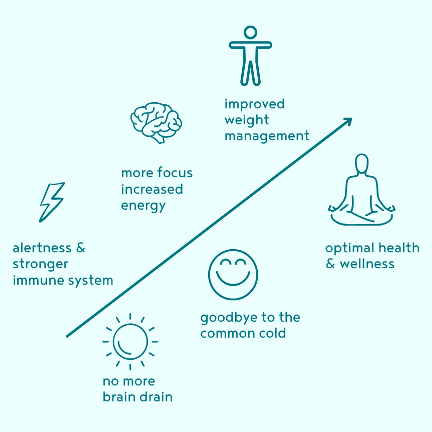What’s the difference between omega-3, omega-6, and omega-9 fatty acids?

Most people have heard of omega-3 fatty acids, but did you know that they’re only one of many dietary fats your body needs? Omega-6 and omega-9 fatty acids are two other fats that benefit your body in different ways.
But what’s the difference between omega-3-6-9, and which foods contain them? Here’s what you need to know.
Omega-3 fatty acids
Omega-3 fatty acids are a type of polyunsaturated fat, one that your body can’t produce naturally. The ‘3’ at the end refers to the number of carbon atoms at the end of the molecular chain.
The easiest way to get omega-3s is through eating different types of fish. Because of that, the American Heart Association recommends eating two or more servings of fish each week.
Three of the most common types of omega-3 fatty acids are EPA, DHA, and ALA. Although they benefit your body in different ways, all of them can help:
- Improve heart health
- Reduce weight
- Support strong mental health
- Combat inflammation
- Decrease liver fat
- Support child brain development
Make sure to eat enough fish to give your body the omega-3 fatty acids it needs!
Omega-6 fatty acids
Omega-6 fatty acids are another polyunsaturated fatty acid. As the number behind their name indicates, there are six carbon atoms at the tail end of the molecular chain.
Most people get omega-6 fatty acids in the form of linoleic acid. Some linoleic acid-rich sources include:
- Walnuts
- Tofu
- Peanut butter
- Avocado oil
- Sunflower seeds
- Eggs
Omega-6 fatty acids help maintain bone health, regulate your metabolism, support healthy hair and nails, and maintain your reproductive system, among other things. Most people should aim for an omega-3:omega-6 ratio of 1:4. However, given how many Western diets make it easy to get omega-6s, people often end up with a ratio closer to 1:15.
Omega-9 fatty acids
Unlike omega-3-6 fatty acids, omega-9s are monosaturated, which means they have one double bond instead of several. Omega-9 fatty acids have nine carbon atoms at the end of each molecule.
Another difference between omega-9s and other fatty acids is that your body can produce them by itself. That said, eating foods rich in omega-9 fatty acids can provide you with health benefits, including better insulin sensitivity and decreased inflammation (1). Some of the best food options to turn to include:
- Olive oil
- Almond oil
- Peanut oil
- Walnuts
- Peanuts
- Cashews
Since they’re non-essential, there’s no daily requirement of omega-9s to shoot for. That said, making sure you’re getting them throughout the day doesn’t hurt!
Should you take a supplement?
Most people get enough omega-6s through their diet, and omega-9s aren’t necessary. However, omega-3s can be tricky for many people to get.
If you’re someone who doesn’t often eat fish (or skips it altogether), turning to an omega-3 supplement might not be a bad idea. Just remember to talk to your doctor before starting it and to monitor how you feel while taking it.
Be an alpha, not a beta, with omega 3-6-9 fatty acids
While there are some differences between them, omega-3-6-9 fatty acids can all benefit your health in many ways. Remember: omega-3s are essential but difficult to get, omega-6s are necessary but easy to get, and omega-9s are unnecessary but beneficial.






